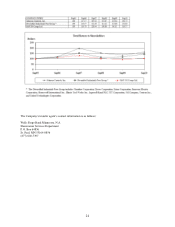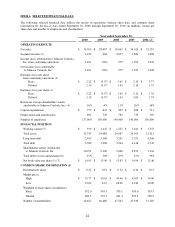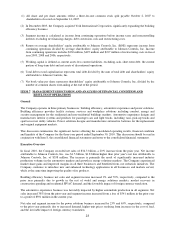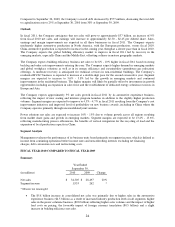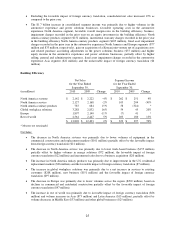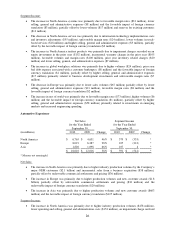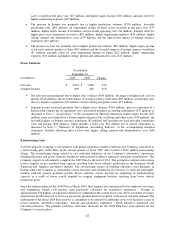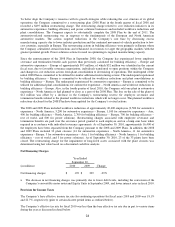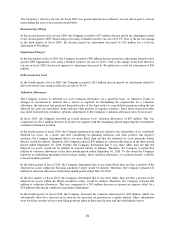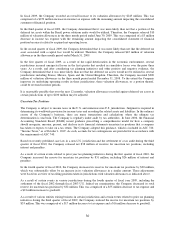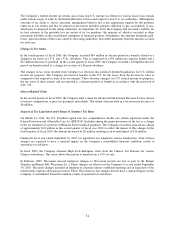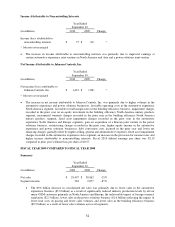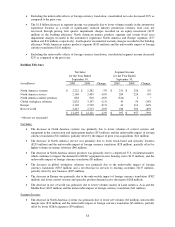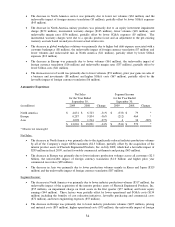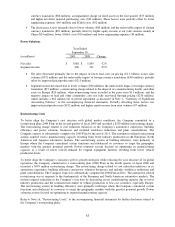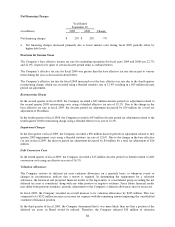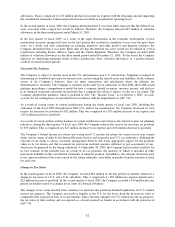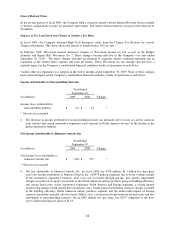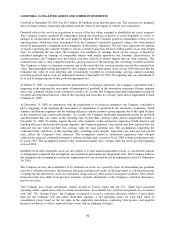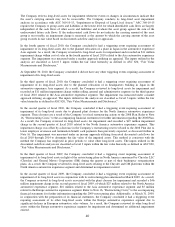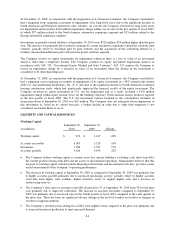Johnson Controls 2010 Annual Report Download - page 31
Download and view the complete annual report
Please find page 31 of the 2010 Johnson Controls annual report below. You can navigate through the pages in the report by either clicking on the pages listed below, or by using the keyword search tool below to find specific information within the annual report.31
The Company’s federal income tax returns and certain non-U.S. income tax returns for various fiscal years remain
under various stages of audit by the Internal Revenue Service and respective non-U.S. tax authorities. Although the
outcome of tax audits is always uncertain, management believes that it has appropriate support for the positions
taken on its tax returns and that its annual tax provisions included amounts sufficient to pay assessments, if any,
which may be proposed by the taxing authorities. At September 30, 2010, the Company had recorded a liability for
its best estimate of the probable loss on certain of its tax positions, the majority of which is included in other
noncurrent liabilities in the consolidated statements of financial position. Nonetheless, the amounts ultimately paid,
if any, upon resolution of the issues raised by the taxing authorities, may differ materially from the amounts accrued
for each year.
Change in Tax Status
In the fourth quarter of fiscal 2009, the Company recorded $84 million in discrete period tax benefits related to a
change in tax status of a U.S. and a U.K. subsidiary. This is comprised of a $59 million tax expense benefit and a
$25 million decrease to goodwill. In the second quarter of fiscal 2009, the Company recorded a $30 million discrete
period tax benefit related to a change in tax status of a French subsidiary.
The changes in tax status resulted from voluntary tax elections that produced deemed liquidations for U.S. federal
income tax purposes. The Company received tax benefits in the U.S. for the losses from the decrease in value as
compared to the original tax basis of its investments. These elections changed, for U.S. federal income tax purposes,
the tax status of these entities and are reported as a discrete period tax benefit in accordance with the provision of
ASC 740.
Interest Refund Claim
In the second quarter of fiscal 2009, the Company filed a claim for refund with the Internal Revenue Service related
to interest computations of prior tax payments and refunds. The refund claim resulted in a tax provision decrease of
$6 million.
Impacts of Tax Legislation and Change in Statutory Tax Rates
On March 23, 2010, the U.S. President signed into law comprehensive health care reform legislation under the
Patient Protection and Affordable Care Act (HR3590). Included among the major provisions of the law is a change
in the tax treatment of a portion of Medicare Part D medical payments. The Company recorded a noncash tax charge
of approximately $18 million in the second quarter of fiscal year 2010 to reflect the impact of this change. In the
fourth quarter of fiscal 2010, the amount decreased by $2 million resulting in an overall impact of $16 million.
During the fiscal year ended September 30, 2010, tax legislation was adopted in various jurisdictions. None of these
changes are expected to have a material impact on the Company’s consolidated financial condition, results of
operations or cash flows.
In fiscal 2009, the Company obtained High Tech Enterprise status from the Chinese Tax Bureaus for various
Chinese subsidiaries. This status allows the entities to benefit from a 15% tax rate.
In February 2009, Wisconsin enacted numerous changes to Wisconsin income tax law as part of the Budget
Stimulus and Repair Bill, Wisconsin Act 2. These changes are effective in the Company's tax year ended September
30, 2010. The major changes included an adoption of corporate unitary combined reporting and an expansion of the
related entity expense add back provisions. These Wisconsin tax law changes did not have a material impact on the
Company’s consolidated financial condition, results of operations or cash flows.


